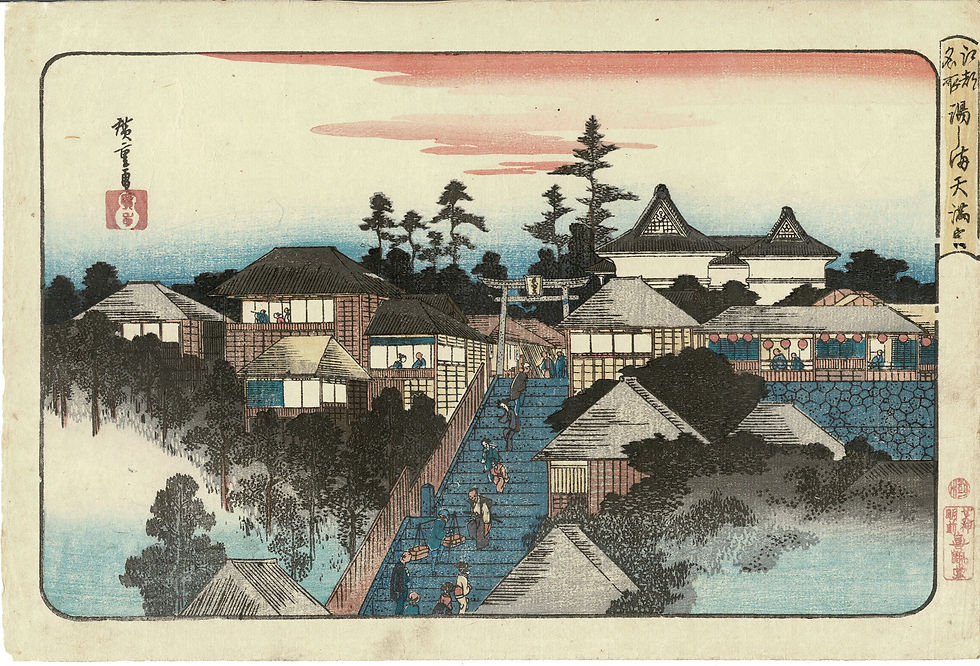Artist: Ryuryukyo Shinsai (1764-1820)
Chapters "Akashi," "Miotsukushi," and "Yomogui", from the series Tale of Genji.
An arrangement of objects featuring a Japanese biwa (small guitar or lute) resting on top of its brocade carrying bag, decorated with plovers flying over waves printed in silver dust.
Date: ca. 1818 (Edo period (1615-1868)
Format: Surimono, shikishi-ban;
Medium: Woodblock printed; ink and color on paper with silver, and guaffrage.
8 1/8'' x 7 1/4'' in.
Fine condition, color & impression.
The title of this surimono references chapters from the Tale of Genji; "Akashi" (referring to Chapter 13's Lady Akashi), "Channel Buoys" ("Miotsukushi"), and "The Wormwood Patch" ("Yomogui"), from the series Tale of Genji.
Fragrances are frequently described in the tale as if they were an additional garment, inspiring numerous Genji-themed incense utensils and complex games of comparing incense woods identified with specific chapters or other literary works. Similarly, music and the sounds of the koto (cat. 85), biwa, and flute are evoked throughout the tale. Musical instruments were not only embellished with Genji imagery but also pictorialized on lacquers and textiles. (Taken from pg. 237 )
Seemingly rare, we have found only one other impression of this design, color plate 325 page 261; The Private World of Surimono; Yale University, 2020.
See Yale University Art Gallery;
Accession Number: ILE2017.30.267
Shinsai - Biwa from the series Tale of Genji, Surimono
Ryuryukyo Shinsai was a painter and woodblock print artist during the Edo period (1604-1868). He was one of Katsushika Hokusai's earliest followers and pupils, adopting his name Shinsai, from Hokusai's 'go' Tatsumasa (Shinsei) and Ryuryukyo, from Hokusai's predecessor Tawaraya Sori I, who bore the same name.
Shinsai became enamored with the art and elaborate printing technique of the surimono (literally printed matter) designed by Hokusai and began designing his own under Hokusai's careful tutelage. In 1809, he released one of his most acclaimed series, 'Kasen-awase' which featured an assortment of still lives.
By 1910, Shinsai was focused solely on designing surimono in the square format (shikishi-ban). He was likely unaware of the fact that he would one day be considered the most prolific ukiyo-e surimono designer of the Japanese Edo period (1604-1868).































